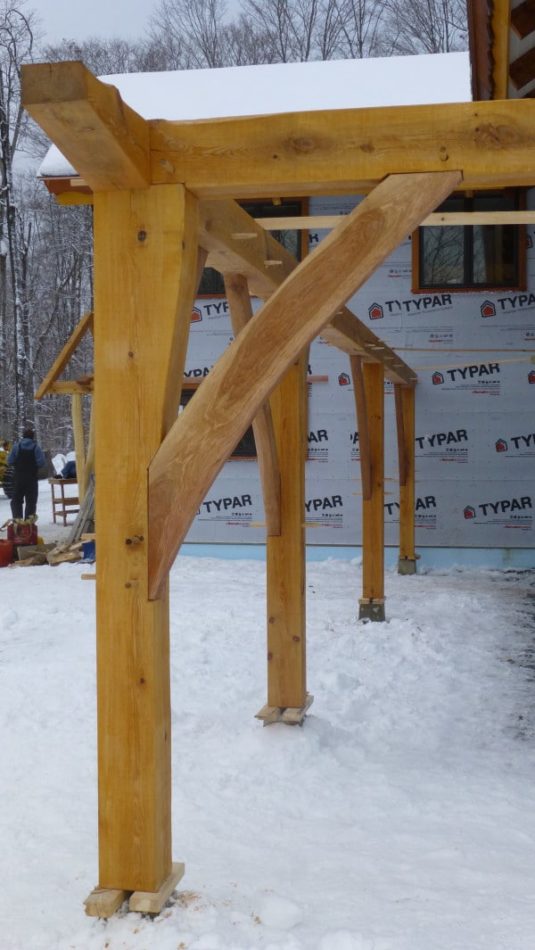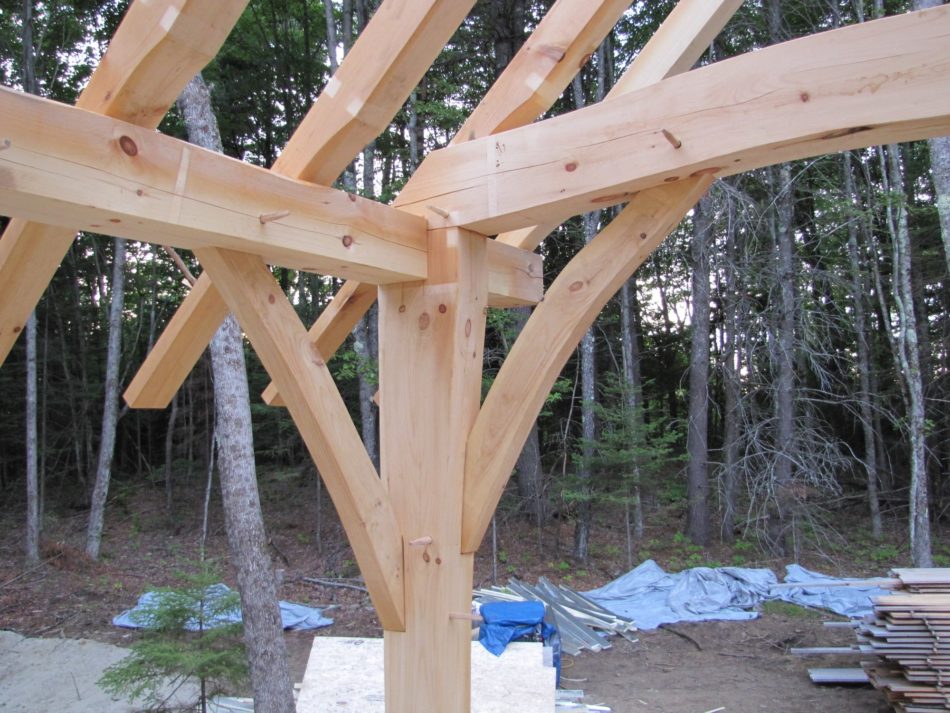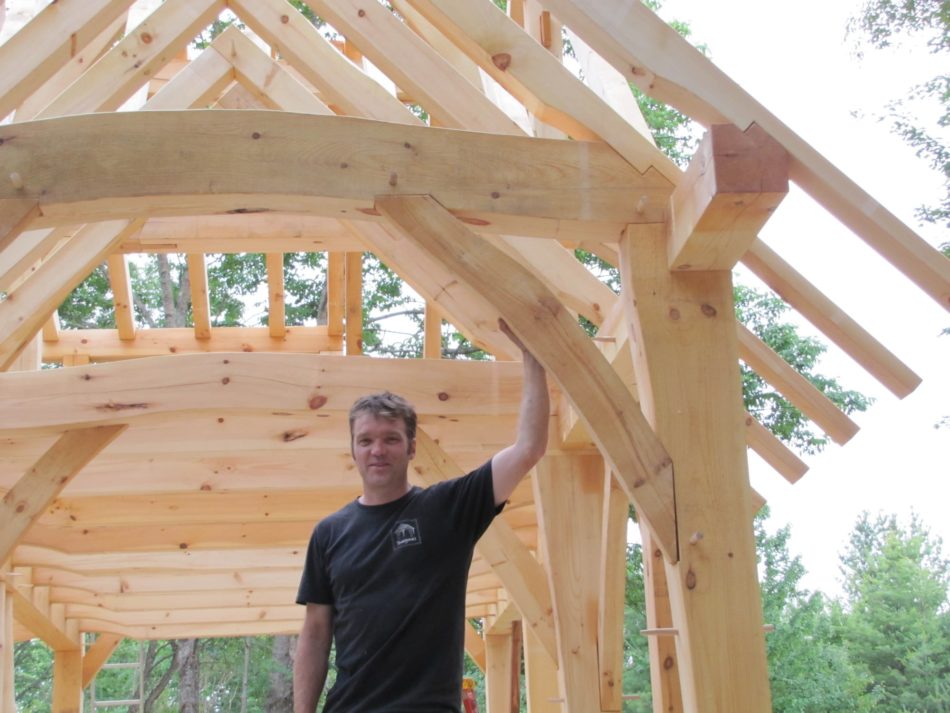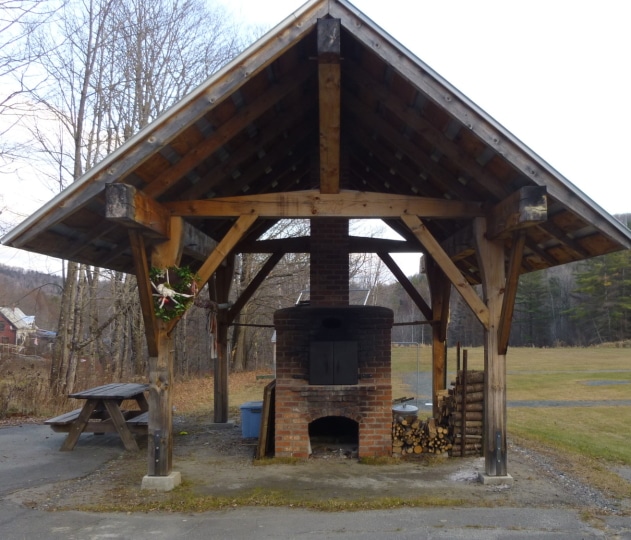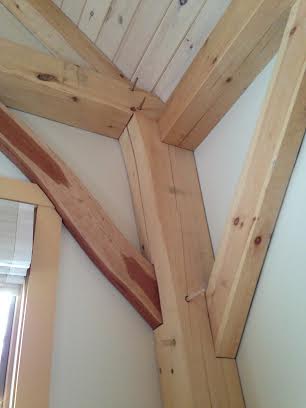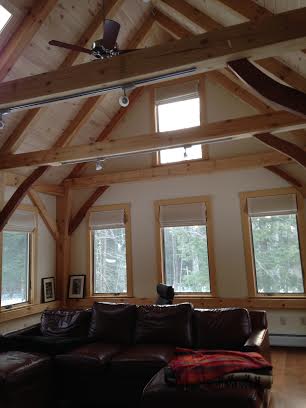For many of us, the jowled post is one of the most attractive timber frame joints. Simply put, it is a post that is wider at the top (than the bottom) which allows bearing for multiple timber members. With a jowled post, it is possible to support both a wall plate and a tie beam at the same time.
Jowled posts have their roots in medieval Europe and developed into a number of different styles, including: flared, gunstock, and truncated. Implying girth, jowled posts were historically created by placing a tree’s trunk upside down. This added strength and size adds resiliency exactly where it is needed,
Nowadays, we typically saw our jowled posts out of large White Pine logs, such as an 8″x12″. The bottom of the post is laid out at 8″x 8″ and travels as such up most of the length of the post. It’s only within the last couple of feet that the post is flared out to its full extent. We typically use a handheld bandsaw to cut the curve. We then finish the cut face with a hand plane, spokeshave, or a sander.
Though not always the case, jowled posts are often incorporated into an English Tying Joint. In such a scenario, the union of post, plate, and tie beam are added to with a rafter. The result can be just astounding!
